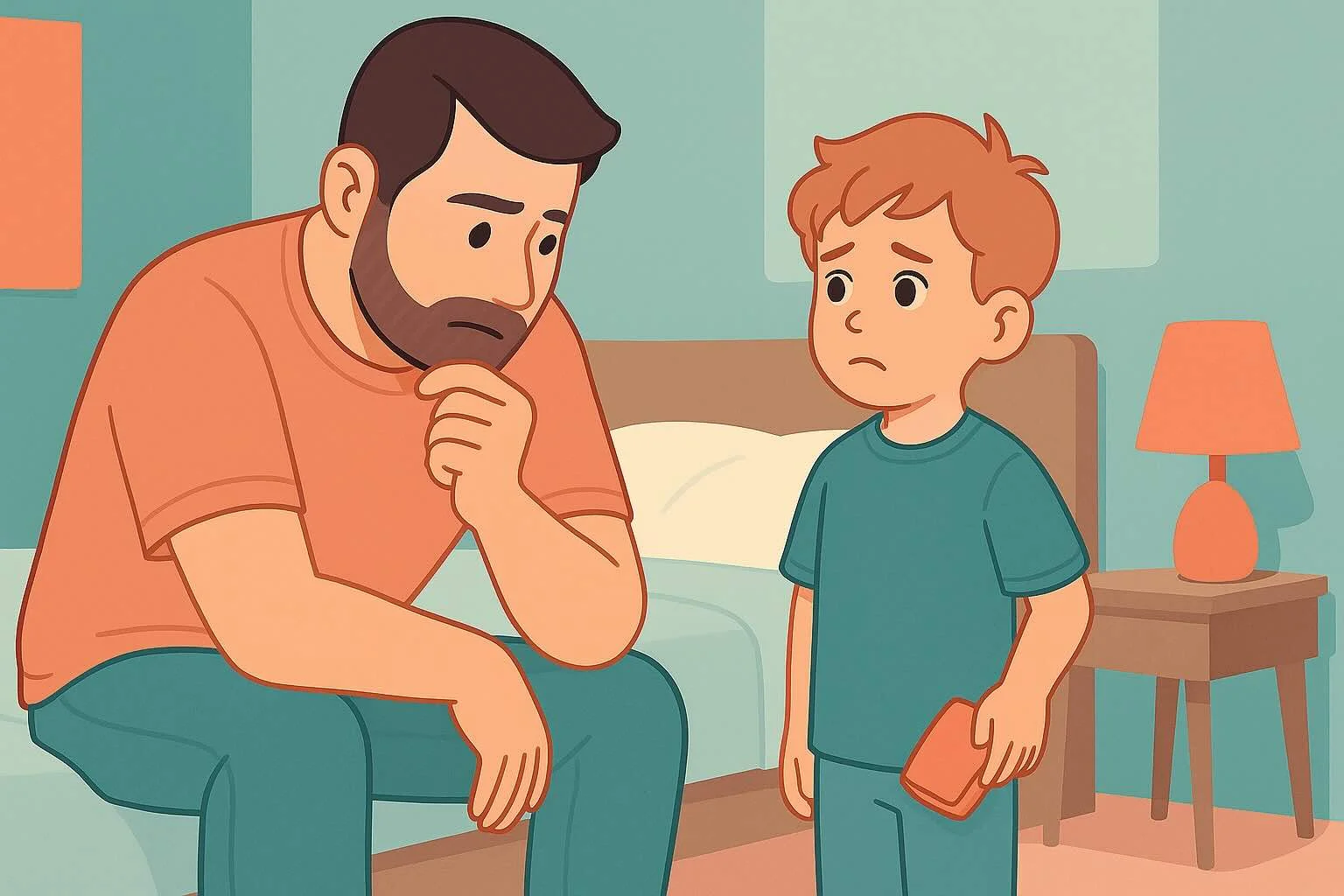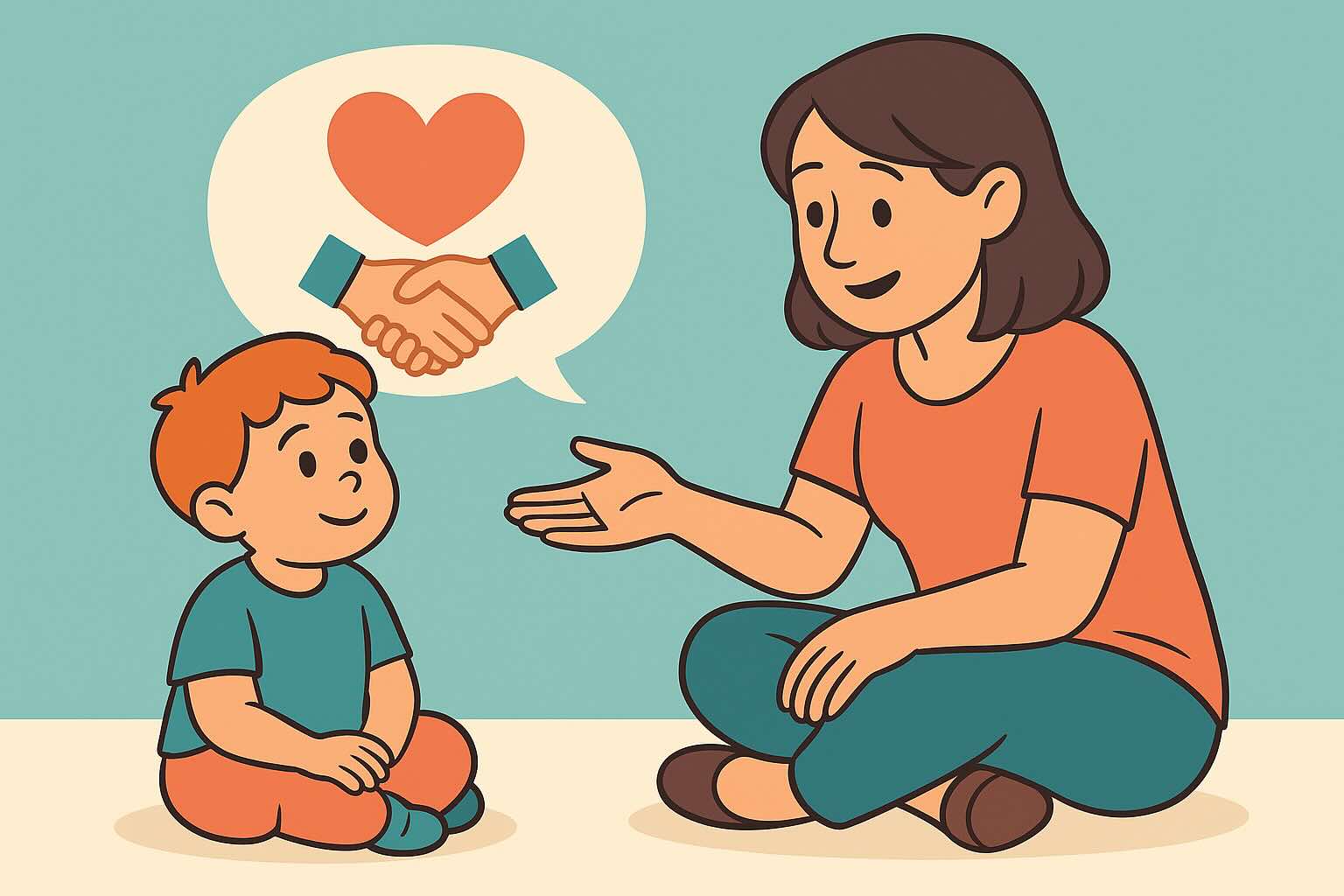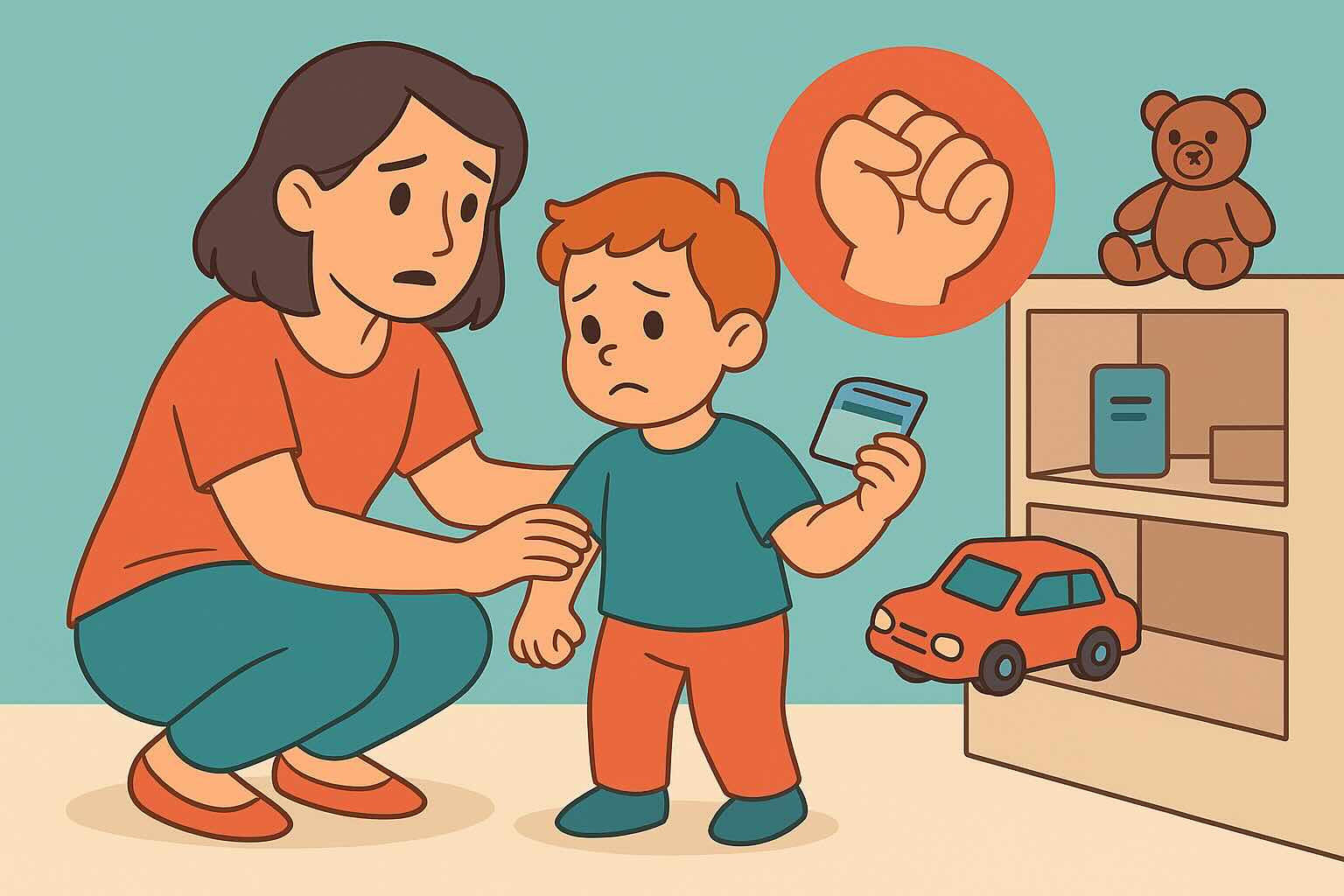Imagination vs Lying: 4 Signs to Tell the Difference and Respond Right

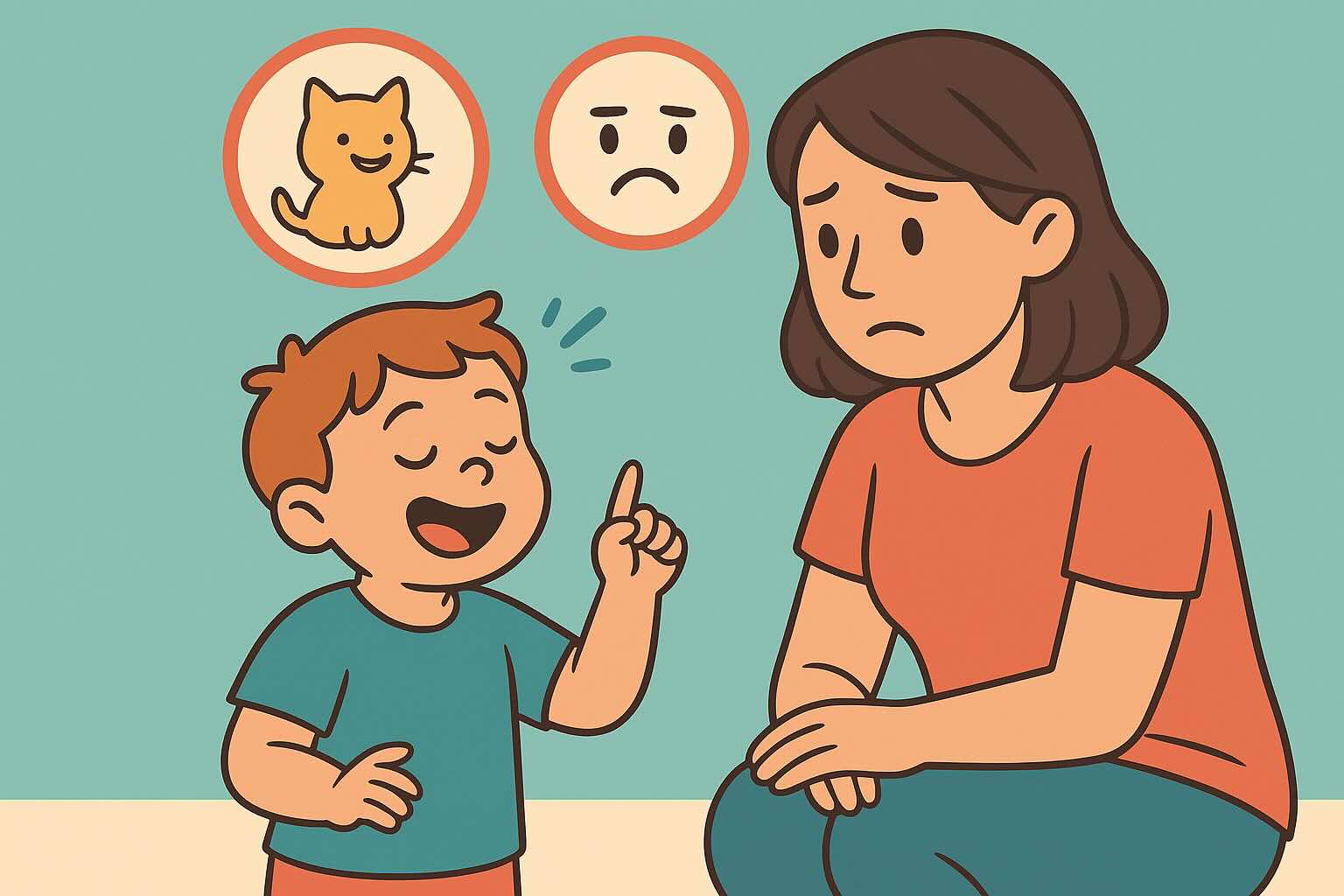
When your 4-year-old tells you they rode a unicorn to preschool or insists they cleaned their room with magic fairy dust, are they lying or just being imaginative? For parents of children ages 3-5, distinguishing between healthy fantasy play and concerning deceptive behavior can feel confusing, but understanding the difference is crucial for nurturing both creativity and honesty.
This guide will help you understand when fantastical stories are a beautiful part of development versus when they might signal the beginning of intentional lying behavior. You'll learn how to celebrate your child's imagination while gently teaching them about truth and reality.
For more guidance on responding to intentional lying, check out our complete lying response guide and our understanding why children lie guide. For building trust after dishonesty, see our trust and honesty guide and stealing behavior guide.
Understanding the Developmental Timeline of Truth vs. Fantasy
Ages 2-3: The Pure Imagination Phase
At this age, children live in a magical world where anything seems possible. Their "untrue" statements are typically:
Fantasy and Wishful Thinking:
- "The teddy bear talked to me"
- "I can fly like a bird"
- "Dinosaurs live in our backyard"
- "I already ate dinner" (because they wish they had, so it feels true)
What's happening developmentally:
- Limited understanding of physical laws and reality
- Magical thinking dominates their worldview
- Memory and imagination blend seamlessly
- No concept of intentional deception
This is NOT lying—it's healthy cognitive development.
Ages 3-4: The Blending Phase
Children begin to understand some differences between real and pretend but still mix them freely:
Common behaviors:
- Elaborate stories mixing real events with fantasy
- Insisting magical events "really happened"
- Using imagination to process fears or wishes
- Creating imaginary friends who feel completely real
Developmental changes:
- Beginning awareness of "real" vs. "pretend" as categories
- Still limited ability to distinguish between them consistently
- Memory formation is still developing
- Emotional needs often expressed through fantasy
Ages 4-5: The Testing Boundaries Phase
This is when you might see the first signs of intentional deception mixed with continued healthy imagination:
New behaviors:
- Testing whether adults believe their stories
- Using creative explanations to avoid consequences
- Beginning to understand that others don't know what they know
- More sophisticated fantasy play with clear "pretend" rules
Key developmental milestone:
- Theory of mind begins developing—understanding that others have different knowledge
- This is the cognitive foundation that makes lying possible
Ages 5+: The Intentional Phase
True lying becomes possible and more common, but imagination should still be celebrated:
What changes:
- Clear understanding of truth vs. falsehood
- Ability to intentionally deceive
- More sophisticated reasoning about consequences
- Can maintain complex imaginary scenarios while knowing they're not real
How to Tell the Difference: Imagination vs. Early Lying
Signs It's Healthy Imagination
Content indicators:
- ✅ Contains magical or impossible elements (flying, talking animals, superpowers)
- ✅ Child seems joyful and creative while telling the story
- ✅ Story changes or evolves when retold
- ✅ Child can engage in "pretend" play using similar themes
- ✅ No apparent motivation to avoid consequences or gain advantage
Emotional indicators:
- ✅ Child seems relaxed and enthusiastic
- ✅ Enjoys when you engage with their creativity
- ✅ Can transition to other activities easily
- ✅ Doesn't become defensive when questioned
Example conversations: Child: "A dragon helped me build this tower!" Parent: "Wow, what did the dragon look like? What color was it?" Child: (excited elaboration about dragon's appearance)
Signs It Might Be Early Deception
Content indicators:
- ⚠️ Story involves only realistic events that conveniently benefit the child
- ⚠️ Child seems to be testing whether you believe them
- ⚠️ Details remain consistent when retold (rehearsed quality)
- ⚠️ Story directly relates to avoiding a task or consequence
- ⚠️ Child insists it's "really real" when questioned
Emotional indicators:
- ⚠️ Child seems nervous or defensive
- ⚠️ Avoids eye contact or fidgets while telling story
- ⚠️ Becomes upset when questioned
- ⚠️ Seems focused on your reaction rather than the story itself
Example conversations: Child: "I already cleaned my room before you asked me to." Parent: "Oh really? When did you do that?" Child: (details about timing that don't quite add up)
How to Respond to Imaginative Stories (Celebrate Creativity!)
Engage and Expand Their Imagination
For clearly fantasy content:
- "What an amazing story! Tell me more about this magical adventure."
- "I love how creative your imagination is. What happened next?"
- "That sounds like a wonderful pretend game. Can I join your imagination?"
Help them build narrative skills:
- Ask open-ended questions about their fantasy world
- Add your own creative elements: "I wonder if the unicorn had rainbow wings?"
- Encourage elaborate storytelling through drawing or acting out stories
Gently Introduce Reality Concepts
Without crushing their creativity:
- "What a fun imagination story! In real life, dogs can't talk, but in stories and imagination, anything can happen."
- "I love your pretend game. In your imagination, you can fly. In the real world, we use airplanes to fly."
- "That's such a creative idea! Let's think about what's imagination and what's real."
Use "both/and" language:
- "In your imagination, teddy bears can talk AND in real life, teddy bears are stuffed animals."
- "You can pretend to be a superhero AND you're also my wonderful little boy/girl."
Create Designated Imagination Time
Structure for fantasy play:
- Set aside specific times for "imagination games"
- Create physical spaces for fantasy play (dress-up corner, story area)
- Use clear language: "Now we're using our imaginations!" vs. "Now let's talk about real life."
Use props and activities:
- Provide costumes and props for role-playing
- Encourage drawing or building their fantasy worlds
- Read books that celebrate imagination while distinguishing fiction from non-fiction
How to Respond to Possible Early Deception
Stay Calm and Curious
When you suspect testing or avoidance:
- "That's an interesting story. I'm wondering if that's what you wish happened or what really happened?"
- "It sounds like you really don't want to clean your room. That's okay to feel that way AND you still need to do it."
- "I think you might be telling me a story because you don't want to get in trouble. Everyone feels that way sometimes."
Validate Emotions While Teaching Truth
Address the underlying need:
- "I understand you don't want to do something hard. It's okay to feel that way."
- "I think you wish that story was true because it would mean you didn't do anything wrong."
- "It sounds like you want me to be proud of you. I'm always proud of you for trying."
Gentle reality check:
- "Let's figure out what really happened so we can solve the problem together."
- "I love your creative stories AND I need to know what's real so I can help you."
- "Imagination stories are wonderful. Now can you tell me the real-life version?"
Teach the Difference Without Shaming
Use educational language:
- "There are imagination stories and real-life stories. Both are important, but different."
- "Imagination helps us be creative. Truth helps us solve problems and trust each other."
- "It's okay to use your imagination AND it's important to tell me what really happened."
Creating an Environment That Nurtures Both Imagination and Honesty
Celebrate Creativity Regularly
Make imagination feel valued:
- Set aside daily time for creative play and storytelling
- Show genuine interest in their fantasy worlds and characters
- Display their creative drawings and celebrate their imaginative games
- Read fiction books together and discuss how stories work
Model imaginative thinking:
- Share your own creative ideas and "what if" scenarios
- Engage in fantasy play with them regularly
- Show that adults value both creativity and truth
Make Truth-Telling Feel Safe
Reduce fear around honesty:
- Avoid harsh reactions to mistakes or problems
- Thank them when they tell you difficult truths: "Thank you for being honest with me."
- Focus on problem-solving rather than punishment when issues arise
Create regular check-in opportunities:
- Have daily conversations about their experiences
- Ask open-ended questions: "What was the best part of your day?" "Was there anything tricky today?"
- Show that you're genuinely interested in their real experiences
Use Clear Language and Boundaries
Help them categorize experiences:
- "Tell me your imagination story" vs. "Tell me what really happened"
- "That sounds like a pretend game" vs. "That sounds like something that really happened"
- "Let's use our imaginations" vs. "Let's talk about real life"
Set appropriate expectations:
- "When Mommy asks what really happened, I need you to tell me the truth"
- "Imagination time is for creative stories. When we need to solve problems, we talk about real things"
- "Both imagination and truth are important, but for different reasons"
When Imagination Becomes Concerning
Red Flags to Watch For
Persistent inability to distinguish reality (age 5+):
- Child becomes extremely distressed when told something isn't real
- Cannot transition out of fantasy even when safety requires it
- Believes dangerous things are possible (jumping from heights to fly)
- Fantasy completely replaces engagement with real world
Using fantasy to avoid all difficult emotions:
- Never acknowledges real problems or mistakes
- Uses elaborate fantasy explanations for every challenge
- Seems to prefer fantasy world to real relationships
- Cannot cope with reality-based disappointments
Compulsive storytelling that seems driven by anxiety:
- Must tell elaborate stories constantly
- Becomes very upset if stories aren't believed
- Stories are repetitive and don't bring joy
- Child seems driven to create alternative realities
Professional Support May Help If:
- Fantasy behavior significantly interferes with daily functioning
- Child shows distress about distinguishing real from imaginary
- Family is struggling to connect with child due to constant fantasy
- Other developmental or behavioral concerns are present
- Parent intuition suggests something deeper is happening
Age-Appropriate Activities That Build Both Skills
For Ages 3-4: Foundation Building
Reality vs. Fantasy Games:
- Sort pictures into "real animals" and "pretend animals" (dragons, unicorns)
- Play "real or pretend" with simple scenarios
- Use simple books that clearly distinguish fiction from non-fiction
Imagination Celebration:
- Daily story time with both realistic and fantasy books
- Dress-up play with clear "pretend" language
- Art projects inspired by their imaginative stories
For Ages 4-5: Skill Development
More Complex Reality Training:
- Discuss what's possible vs. impossible in simple terms
- Explore real animals vs. mythical creatures
- Visit places that connect to their interests (zoo, farm, museum)
Advanced Imagination Play:
- Help them create detailed fantasy worlds with consistent rules
- Encourage story creation with beginning, middle, and end
- Introduce the concept of authors who write fiction vs. non-fiction
For Ages 5+: Integration and Balance
Critical Thinking Development:
- Discuss how movies use special effects to show impossible things
- Explore the difference between historical events and fairy tales
- Encourage questions about how things work in the real world
Creative Expression:
- Support writing or dictating their own stories
- Help them illustrate the difference between biography and fiction
- Encourage performance of their stories for family
Your Action Plan for Nurturing Both Imagination and Honesty
Week 1: Observe and Appreciate
- Notice when your child uses imagination vs. when they might be testing boundaries
- Celebrate their creative stories with enthusiasm
- Begin using "real vs. pretend" language casually
- Avoid correcting imagination unless safety is involved
Week 2: Create Structure
- Establish specific times for imagination play
- Begin using clear transitions: "Imagination time!" vs. "Real life conversation"
- Start having daily check-ins about real experiences
- Show equal enthusiasm for both creative stories and honest sharing
Week 3: Teach Distinctions
- Practice sorting "real vs. pretend" with books, pictures, or games
- When unsure about their stories, ask: "Is this real or imagination?"
- Respond appropriately to each type of story
- Model your own imagination vs. factual storytelling
Week 4: Build Long-term Habits
- Continue celebrating both imagination and honesty
- Address any concerning patterns you've noticed
- Establish family storytelling traditions that honor both fiction and truth
- Plan ongoing activities that support both skills
Key Takeaways: Balancing Creativity and Honesty
- ✅ Imagination is crucial for healthy development and should be celebrated, not corrected
- ✅ True lying requires cognitive abilities that don't fully develop until age 5+
- ✅ Most "untrue" statements in ages 3-5 are fantasy, wishful thinking, or memory blending
- ✅ Use clear language to help children categorize "real vs. pretend" experiences
- ✅ Create safe spaces for both imagination time and honest communication
- ✅ Look for emotional motivations when stories seem designed to avoid consequences
- ✅ Celebrate honesty while maintaining enthusiasm for creative expression
- ✅ Model both skills by sharing your own imaginative ideas and being truthful
- ✅ Seek support if fantasy consistently interferes with reality engagement
Remember: Your goal is to raise a child who can both dream big and tell the truth—these skills work together to create confident, creative, and trustworthy human beings.
This article is based on developmental psychology research and child development milestones. Individual children develop at different rates. Trust your instincts and consult with child development professionals if you have specific concerns about your child's relationship with reality and fantasy.
24/7 AI Parenting Assistant
Get instant, personalized advice with expert-curated parenting knowledge. Chat with your AI coach anytime, anywhere.
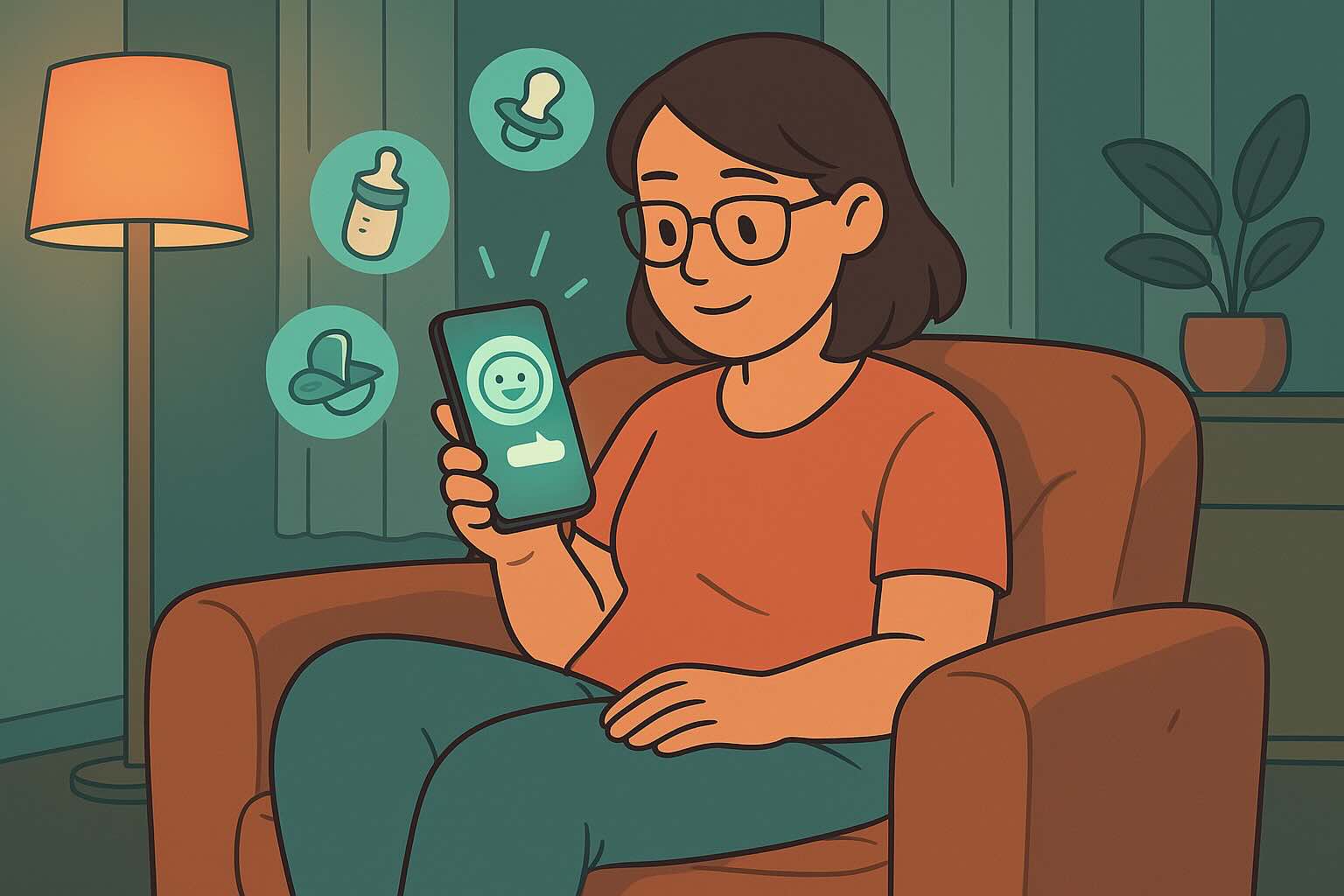
Trust Building Toolkit
Daily practices and scripts to build unshakeable trust and honest communication with your child.
Frequently Asked Questions
Need personalized support?
RootWise's AI coach can provide tailored strategies for your specific situation, available 24/7 when you need it most.
Learn More About AI Coaching →